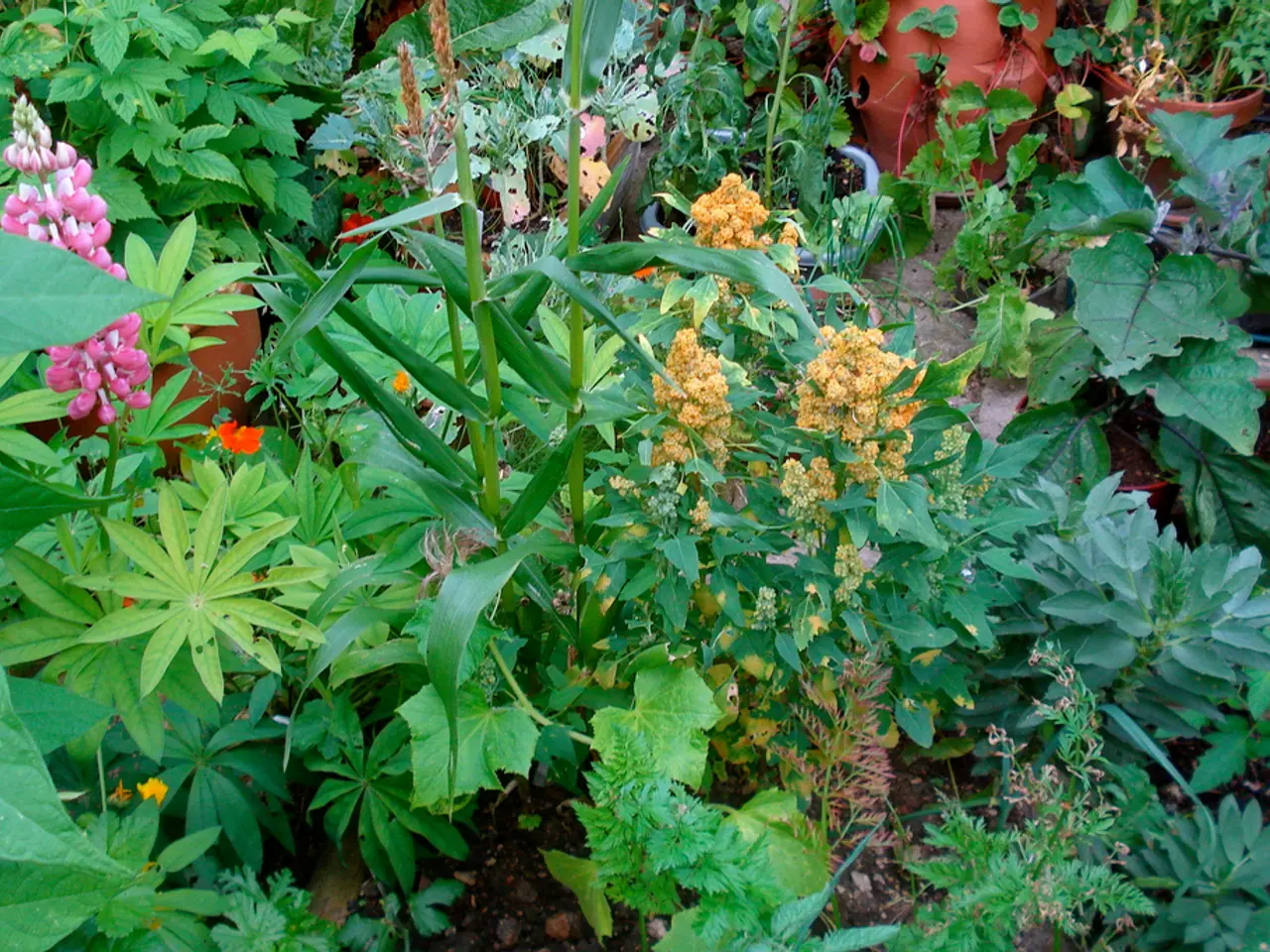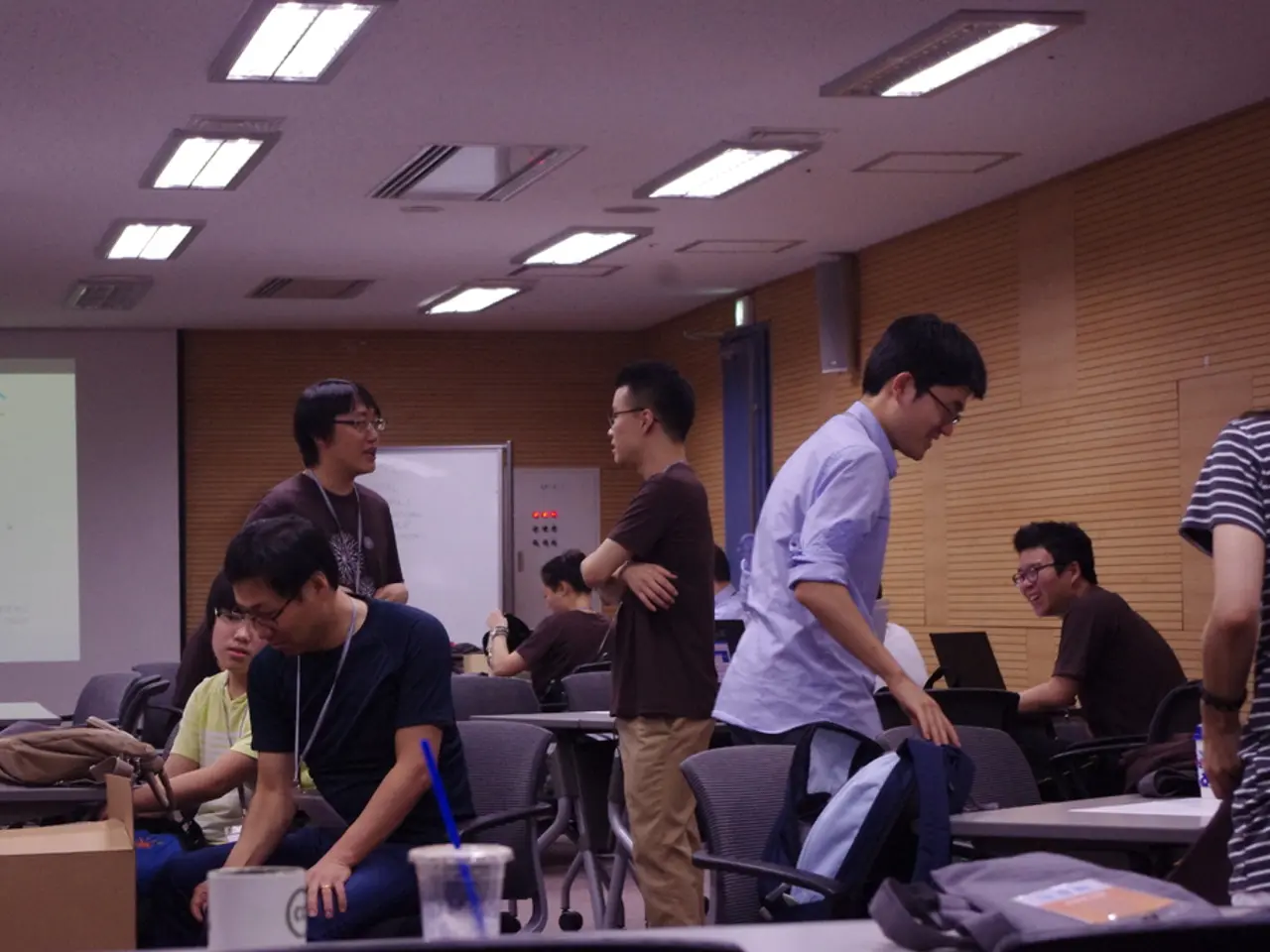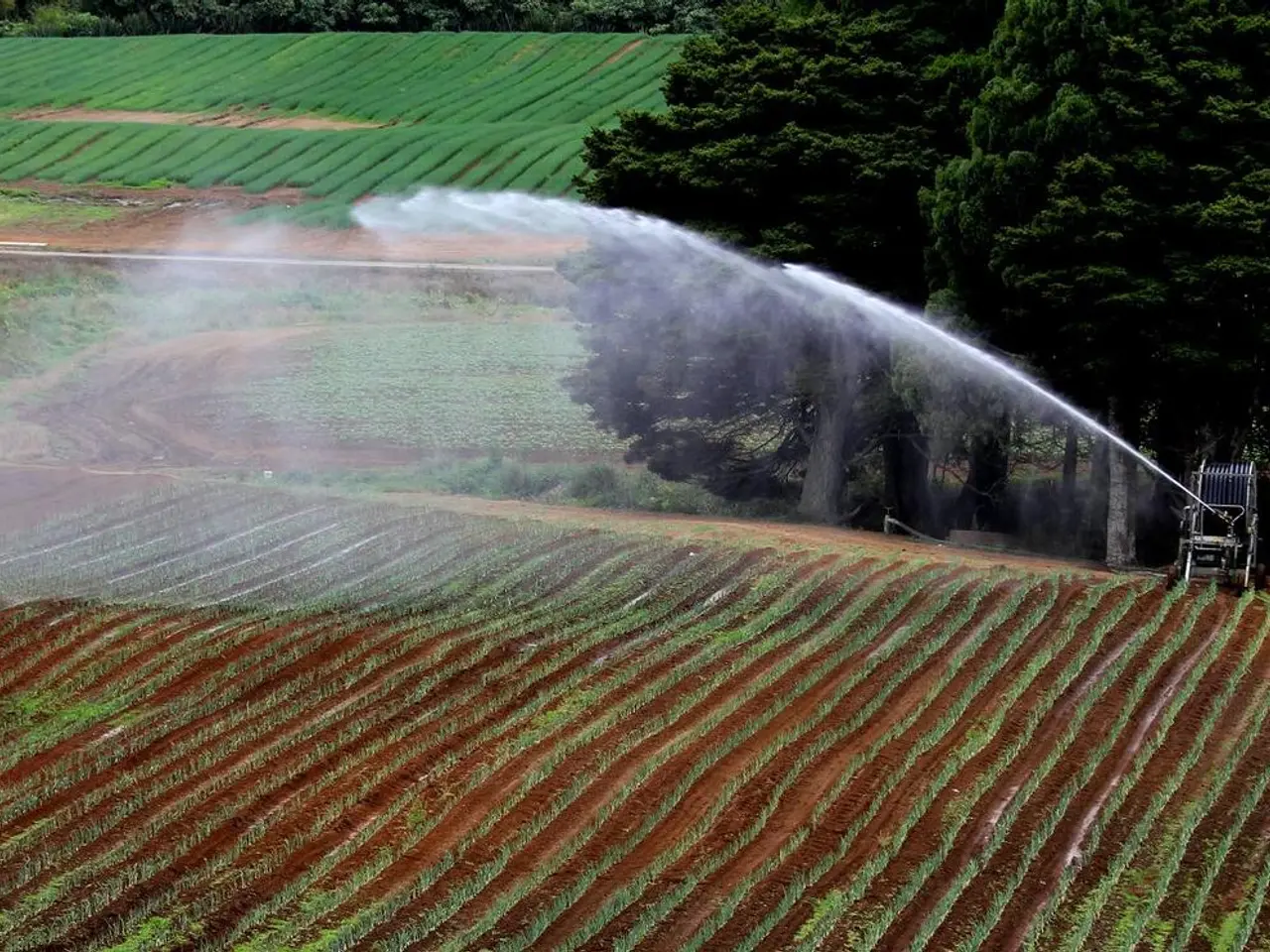Creating and Embedding Seed Bombs in the Ground
In the realm of sustainable agriculture, seed bombs have emerged as a unique and innovative solution, pioneered by Japanese farmer and philosopher Masanobu Fukuoka. These compact seed-filled balls, made from a mix of seeds, compost, and clay, are transforming barren lands into blooming fields.
To create effective seed bombs, it's crucial to consider several factors. The recommended size for seed bombs is about 2 inches long and 1 inch wide. For best results, they should contain 3-5 seeds per bomb. When choosing seeds, wildflowers are best, with beneficial herbs also being a viable option. Local wildflower seed companies or gathering one's own seeds of preferred flowers make for good seed sources.
The soil conditions and climate play a significant role in the success of seed bombs. In compacted soils, which often have poor aeration, drainage, and root penetration, seed bombs may face challenges. However, selecting appropriate native plant species with strong root systems can improve soil structure over time. For example, in compacted areas, species like Pennsylvania Sedge and Prairie Dropseed are known to thrive and help gradually restore soil health by loosening compacted soils and stabilizing the surface.
In prairie climates, which can have variable soil types and are subject to fires and dry conditions, seed bomb success depends on matching seed species to the ecosystem. Seed balls might face challenges if dropped in dense vegetation or undergrowth where seedlings struggle to compete.
Additional considerations impacting seed bomb effectiveness include seed compatibility with local ecosystems, seed ball integrity, and soil amendments. It's essential to ensure the seeds are not on the list of noxious weeds, as most counties have their own lists. Seed bombs must not disintegrate prematurely, or seeds may germinate outside the targeted location, reducing success. Adding biochar can improve soil structure, benefiting seed bomb germination in degraded soils, including compacted pasture lands.
When deploying seed bombs, it's important to make room for them and ensure contact with the soil for optimal germination. In some cases, pre-treatment such as soil amendment or mechanical loosening may be necessary to enhance seedling success.
Seed bombs have shown to work well in prairie climates, even in compacted soil and during an unusually dry spring. They are most known for planting wildflowers and are used to create a flower and clover field in permaculture design.
The practice of making and planting seed bombs is not new; Native Americans used mud around corn seeds to protect them from birds. When making seed bombs, the soil used should hold together well, as demonstrated by the author's use of clay-rich soil from their land. The seed bomb mixture needs to be moist enough to stick together. Seed bombs should dry quickly in the sun to avoid seeds germinating prematurely.
In conclusion, seed bombs can be effective in restoring vegetation in prairie climates and compacted pasture lands if they utilize native species suited to the local soil and climate, are deployed in a way that ensures good soil contact and seed protection, consider soil amendments or mechanical preparation where soils are compacted, and avoid introducing invasive plants that disrupt local ecosystems. Without such considerations, their effectiveness is diminished due to environmental mismatches, poor germination conditions, or ecological risks.
- In the process of manufacturing seed bombs, it's essential to consider the size of each bomb, with 2 inches in length and 1 inch in width being recommended.
- To maximize success, 3-5 seeds should be included in each seed ball, while wildflowers and beneficial herbs are recommended seed choices.
- Acknowledging that soil conditions and climate are vital factors, seed bombs might face challenges in compacted soils yet can be improved by using native plant species with strong root systems that help restore soil health.
- In prairie climates, which can have variable soil types and are susceptible to fires and dry conditions, seed bomb success depends on matching seed species to the local ecosystem to avoid challenges in dense vegetation or undergrowth.
- Additional factors impacting seed bomb effectiveness include seed compatibility with local ecosystems, seed ball integrity, and soil amendments, such as biochar, which can benefit germination in degraded soils.
- As demonstrated by the historical use by Native Americans, the practice of making seed bombs involves using soil that holds together well, such as clay-rich soil, and ensuring the mixture is moist enough to stick together, while drying quickly in the sun to prevent premature germination.




